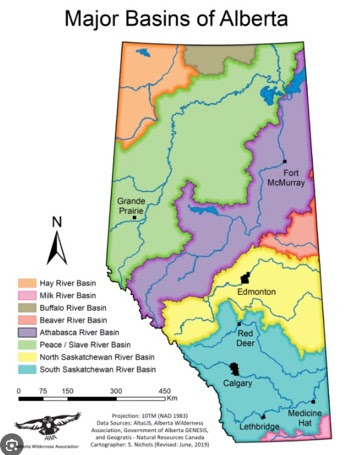Hi Everybody!
Steve Luethi, his buddy Pat and I spent 4 days in the backcountry at picturesque Banff National Park. We hiked 18 km one way over two major mountain passes to get to a lake that had colourful Yellowstone cutthroat trout. We also fished some small streams for brookies and cutthroat trout! It was a grunt to get there but the scenery and fishing was amazing. The best fly during that trip was a chernobyl ant! I was amazed that trout at 7000 feet were interested in such a big fly. I included a few pictures from this neat hike in this post! Tonight's theme was all about chernobyls. West River Fly Shop was full of keen tiers who learned to construct three great foam patterns!
Here is a blog post that shows lots of pictures and the story of this wonderful adventure:
I love Charlie Craven's, Charlie Boy Hopper! Tonight we tied the smaller version called the Baby Boy Hopper, essentially a beattle pattern. We also had time to tie the Charlie Boy Hopper, while Steve showed the gang how to tie a great Furry Foam Chernobyl pattern that he regularly fished on the eastern slopes and as he showed tonight on several back country lakes.
Our club has a busy week ahead.
Remember:
1. Friday, February 1st is Pub Night at Tiffany's Pub starting at 7 pm. Phil Rowley, his wife Patsy, Karen and I will be there to visit with you. Be sure to bring your spouse and fly fishing buddies!
2. Saturday February 2nd is our all day fly tying seminar with Phil Rowley. Phil has an excellent presentation lined up. You will have an opportunity to try lots of tying techniques with one of the best tying instructors in North America! We still have space for another 4 or 5 tyers!
We will have coffee on at 8:30 am and the seminar starts at 9 am. If you want to have Karen and Patsy bring pizza for your lunch, have an extra few bucks along. We will have coffee, snacks and water available for everybody!
Remember the workshop is located at a storage facility just south of the Red Deer Landfill. Here is the exact location! 484 McCoy Drive!
It is the SAME place as last year!
Yes there is a tying session next Monday February 4th. Wayne McElderry is our guest presenter. This will be the first time Wayne is in front of the camera. Lets have a great turn out! Wayne says to bring red and black thread!
Finally I want to wish Troy, Steve, Dana and Tim the best. They are off to Oman to fly fish for two weeks. I bet that will be an amazing trip.
Steve's Furry Foam Chernobyl
Hook: size 6-4xl streamer hook
Body; Furry foam, glued to tan and brown 2 mm foam
Legs: Round rubber legs
Wing: EP Fibres
Baby Boy Hopper (Charlie Craven originator)
Thread: Black UTC 8/0 or 6/0
Hook: Curved Nymph hook or Czech Nymph hook sizes 12-16
Body: Black 2 mm foam
Legs: Rubber-round
Wing: Elk or deer hair
Charlie Boy Hopper (Charlie Craven originator)
Thread: UTC 8/0 or 6/0, colour to match
Hook: Hopper hook or Streamer Hook, sizes 6 to 12
Body: 2 mm foam
Legs: Rubber-round
Wing: Elk or deer hair































































